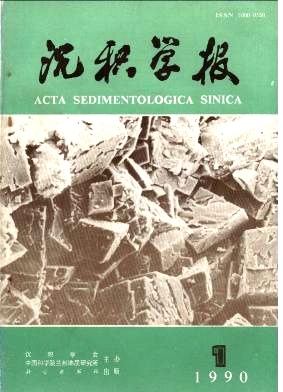MECHANISM OF HYDROCARBON FORMATION FROM OIL SHALE KEROGEN VIEWED BY HIGH MAGNETIC FIELD SOLID STATE C-13 NMR SPECTROSCOPY
- Received Date: 1987-12-07
- Publish Date: 1990-03-10
Abstract: Fushun oil shale was pyrolysed in Fischer Assay with heating rate of 5℃ / mm to different final temperatures ranged from 400 to 510℃ .The raw oil shale and the pyrolyzed solid residues were extracted by chloroform and demineralized by hydrochloric acid and hydrofluoric acid. The chemical structure of these kerogen concentrates was investigated using the high field (75.46 MHz) solid state C- 13 NMR spectroscopy with cross polarization and magic angle spinning. The Dixon TOSS technique combined with rotor spinning rate of 4 KHz suppressed the aromatic carbon spinning side-bands and provided satisfactory spectra of high resolution and low distortion. In the aliphatic carbon region, the peaks assigned to the terminal methyl carbons ( 14-16 ppm), the aromatic bonded methyl carbons ( 18-20 ppm), the ethelene carbons (28-30 ppm) and the shoulder (35-40 ppm) likely assigned to the alpha methelene or methine carbons bonded to the aromatic rings, are founded to be distinguished distinctly. The resolution of the aromatic carbon region is limited perhaps due to the anisotropy of the aromatic structure. Generally, the high field solid state C-13 NMR (CP / MAS+TOSS) spectroscopy provided a direct method for detecting and measuring the carbon distribution of kerogen. The aliphatic termimal methyl carbon is weakened graduately as the final temperature of degradation is increased, that implies it takes an active part in the oil and gas formation. On the contrary, the aromatic methyl carbons grow up from a shoulder in the original kerogen NMR spectra to a main peak of residue aliphatic carbons for the kerogens which had experienced the high degree thermal degradation. It supports the hypothesis that the beta bond scission is one of the essential reactions in the thermal degradation process. The most dominant resonance band of the original kerogen is the methelene carbons, which consume quickly throughout the process of oil and gas formation, and were depleted as the genaration of oil had finished. The broad band of aromatic carbons becomes a dominent peak in the spectrum as the process is going on. It is found that the yield of aromatic carbon in the whole process of degradation is kept nearly constant. Since the aromatic cluster of the original kerogen had been recognized in the previous studies to be primary composed of 3-5 kata-condensed rings, yet most aromatic components of shale oil have only single and double rings, it reasonable to assume that as the simple aromatics were formed by aromatization of aliphatics, they are rather easy to migrate as components of oil, and merely the intrinsical aromatic carbons were left in the degradated kerogens. It sounds to be an answer that why the conservation of aromatic carbon is not an individual feature in many thermal degradation experiments for different types of kerogens. In general, the aomatic carbons contribute little to the generation of hydrocarbons. Based on the NMR and ultimate analysis data of kerogens, a series of chemical structural parameters had been derived, including apparent carbon aromaticity, average carbon number of methelene groups and ring condensation index. They are correlated with the kelative oil yields of the derogens where the original kerogen oil yield was taken as unit. A straight line is plotted to show the relation between relative oil yields and apparent aliphatic carbon fractions. It intersects with the axis of aliphatic carbon fraction at 0.17, indicates that this portion of aliphatic carbon have not taken part with oil generation. Another straight line plotted with the sum of methelene and terminal methyl carbon fractions instead of the aliphatic carbon fraction reaches the origin point. It means that they are the exact matrix of oil.The relation of relative oil yields and average number of carbon atoms in methelene groups of carbon number larger than 5 possess of high potential in generating oil, and those of less than 3 are insignificant to the oil formation. The curve of ring condensation index evolution path depicts different reaction stages of
| Citation: | Qin Kuangzong, Wu Xiaoling. MECHANISM OF HYDROCARBON FORMATION FROM OIL SHALE KEROGEN VIEWED BY HIGH MAGNETIC FIELD SOLID STATE C-13 NMR SPECTROSCOPY[J]. Acta Sedimentologica Sinica, 1990, 8(1): 19-27. |






 DownLoad:
DownLoad: